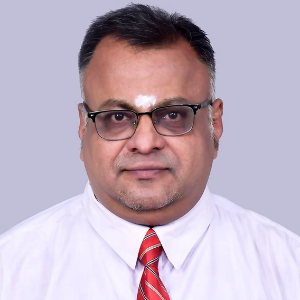Title : Strategic Environmental Assessment (SEA) process for Addiction and Substance Use Disorder (AUSD) mitigation centers towards sustainable environmental addiction medicine, behavioral health, and psychiatry forsustainable development
Abstract:
“Sustainable development is a kind of development that meets the needs of the present generation without compromising the ability and efficiency of future generations to meet their own needs”. The process of applying environment and sustainability factors in the design of addiction and substance use rehabilitation centers while focusing on environmentally sustainable rehabilitation practices in reducing environmental foot print by consuming less environmentally damaging products. The research has been conducted those children of genetic, source specific and industrial specific addicts are at greater risk of becoming addicts themselves. When children suffer from physical, mental, or sexual trauma, physiological porn trauma, they may turn to addictive behaviors or substances to cope with the pain and stress. Sustainable environment addiction medicine is a medicine specialty that deals with diagnosis, prevention, evaluation, treatment, and recovery of persons with addiction, of those with toxic substances related to alcohol, tobacco, drug, propoxyphene, sexual addiction, smart phone addiction, internet addiction, illicit drugs, illicit porn substance and addiction disorders including environmental public health, psychology, social work, mental health counselling, psychiatry and among others by reducing consumption of toxic substances. The COVID-19 pandemic influenced all aspects of human life, and mental health, psychosocial effects affected the ongoing addiction and substance use disorder (ASUD) crisis. The addiction resource conservation and recovery (RCR) method has been devised prior to environmental addition impact assessment (EIA) process. Strategic environmental assessment (SEA) process can be broadly defined as a study of the impacts of a proposed project, plan, project, policy or legislative action on the environment and sustainability. Vijayan Gurumurthy Iyer (2022) mentioned that the root cause problem solution for ozone layer depletion potential (OLP) impact, global warming potential (GWP) impact and green house synergic (augmentative) gas (GHG) emission impact in context to ASUD resources conservation and recovery centres that are measured, monitored and mitigated by international environmental impact assessment process for the sustainable environmental climate change and control. The health impacts of projects, plans, programs, or policies, and legislative actions should be considered in the decision-making process. Because of the importance of these concerns during post COVID-19 World, an environmental health impact assessment (EHIA) process is proposed for ASUD mitigation centres (Vijayan Gurumurthy Iyer, 2022). For certain types of projects such as de-addiction and ASUD rehabilitation centres , nuclear power plants , it may be necessary to address psychological impacts on children, nearby residents, and industrial workers. In this research, SEA process has been aimed in order to incorporate environmental and sustainability factors in to addiction resource conservation and recovery project planning and decision making that included policies, programs, plans and legislative actions. Sustainable addiction development is a kind of development that meets the needs of the present without compromising the ability and efficacy of future generations to meet their own needs. Environmental Impact Assessment (EIA) process can be defined as the systematic study and check of the potential addiction impacts (effects) of proposed projects, plans, programs, policies or legislative actions relative to the physical-chemical, biological, cultural, and socioeconomic components of the total environment. The primary purpose of the EIA process is to encourage the consideration of the environment in De-Addiction Centre (DAC)/ASUD rehabilitation center through organizational project planning and decision-making process and to arrive at actions that are environmentally detoxification, environmentally friendly behavioral and medically compatible. DAC process should include the integrated consideration of technical or medical, economic, environmental, safety, and health, social and sustainability factors to mitigate ASUDs. Prior to the National Environmental Policy Act (NEPA) process in 1970 in the USA, technical or medical and economic factors dominance the World’s addiction and substance use (ASU) \ projects. The objective of the study is to conceptualize SEA process for the climate change and pollution control in de addiction sector based on research studies conducted at Bihar Institute of Public Administration and Rural Development (BIPARD) for developing training and research course module on climate change and control. The design of the study is cross sectional. Environmental Health Impact Assessment (EHIA) process has been conducted for addiction industry to consider the environmental addition health impacts, environmental quality, safety and health impacts to mitigate psychological health effects on children, occupational industrial health workers and residents. Social Impact Assessment (SIA) process can be defined as the systematic identification and evaluation of the potential social environmental addiction impacts (effects) of proposed projects, plans, programs, or legislative actions such that social consideration is encouraged in DAC and to arrive at actions that are socially compatible with reference to a sustainable de- addiction project. SEA process concerns to environment and sustainability effects in DAC process and arrive at proposed projects, plans, programs, and legislative actions that are compatible with respect to environment and sustainability issues. Addiction medicine product environmental lifecycle analysis (LCA) has been conducted for identifying and measuring the impact of products on the environment and sustain efficacy by means of mass and energy balance methods in DACs. LCA considers the activities related to raw materials, transformation, ancillary materials, equipment, method, market, man power, production, use, disposal and ancillary equipment. As far as de-addiction safety is concerned personal protective equipment and materials (PPEMs) that include de-addiction garments, clothing, gloves, safety shoes, hard hats, safety glasses, shields, respirators, full aprons, safety belts, and other safety items which have to be used by an individual. Such de-addiction equipment is important for personal protection and for safety. It is the manager’s and supervisor’s responsibility to ensure that they are used for ASUD rehabilitation process. The enactment of worker’s compensation law and occupational disease law shall increase materially the cost of insurance to ASUD industries. The increased cost and the certainty with which it is applied will put a premium on addiction disaster prevention work. This cost can be materially reduced by the installation of safety devices. Addiction and Substance Use (ASU) disaster management research experience has shown that approximately 80% of all the ASUD disasters are preventable. EIA and EHIA processes have been conducted for addiction medicine, behavioral health and psychiatry to consider the safety and health impacts to mitigate ASUD psychological health effects on children, industrial workers and residents. SEA system is a potentially useful element of good environmental management and sustainable development; however, as currently practiced in addiction medicine, behavioral health and psychiatry industries, it is far from perfection. Emphasis should be given in source specific, specific industries and generic ASUD mitigation centers on maintaining economic viability of the operation and process, while in turn taking care to preserve the ecological and social sustainability of the country. International EIA process required multi-disciplinary approach that has been conducted for technical, medical, economic, ecological and social sustainability. Environmental health impact assessment (EHIA) is proposed for addition medicine, behavioral health and psychiatry. To establish a role model sustainable environmental de-addiction medical, behavioral health and psychiatry center for mitigation of ASUD.
KEY WORDS: addiction, conservation, de-addiction, resource, recovery, substance, education, environment,
medicine, environmental quality, behavioral health, porn, psychiatry, generic, source-specific, industry, use, management, sustainability.
What will audience learn from your presentation?
• Environmental health impact assessment is learnt by the learners on the topic addition medicine, behavioral
health and psychiatry
• The audience an able to achieve common goals in de-addiction industry but differentiable and integrative
responsibilities, authorities and accountability,
• This research can be interdisciplinary as faculty could use to expand their research or teaching. This abstract is
a practical solution to a addition problem that could simplify or make a designer’s job more efficient. Yes it
will improve the accuracy of a de addition design, or provide new information to assist in a design problem?
List all other benefits.
• To mitigate addiction and substance use disorders (ASUDs) .
• To establish a role model sustainable environmental de-addiction medical, behavioral health and psychiatry
center.




